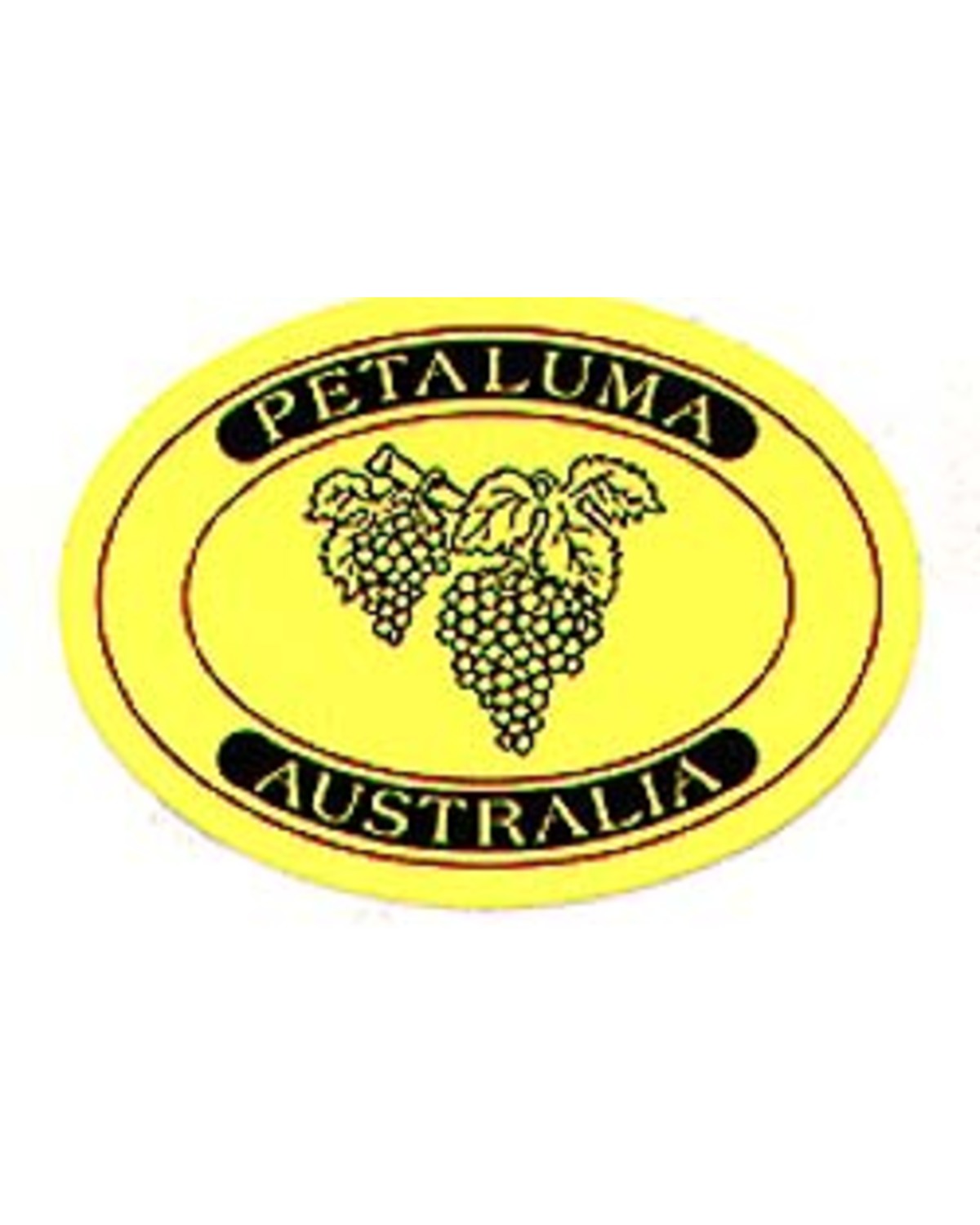1994 Petaluma Coonawarra Merlot
Coonawarra, South Australia,
AUSTRALIA
MERLOT - WHAT'S SO SPECIAL ?
Chateau Petrus with its extraordinarily high prices and international acclaim has mesmerised wine lovers around the world. Its tools of trade are scarcity, virtual unaffordability (unless you're a millionaire) and supreme marketing by Christian Moueix - but given all that, is it so special? The question lingers...........Let's look at Merlot from a practical point of view. Why is it grown? Winemakers don't usually grow fruit unless they can make money from it, which means it has to be a saleable commodity. Merlot is an early maturing grape variety, it ripens first in the Cabernet family - sometimes up to 10 days earlier, but usually a week. That's a big advantage in a cool year, and hence provides viticultural insurance to the Cabernet wine grower. The second reason is that it likes cool damp soils, (not the well drained type that Cabernet demands) particularly if you've got a bit of clay in it and it retains its Summer moisture. The third reason is that merlot actually yields slightly higher than Cabernet - more dollars in the till! Fourthly, it's more approachable as a young wine, having excellent colour, less tannin and less acidity - a big plus for red wine makers who want their wine out on the market and with instant drinkability. In fact the winemakers have even done a good job educating the public into believing that Merlot equals soft, but that need not be the case! There are down sides of course - there always are in these things, it's thin skinned and subject to rot should it rain, and even worse in a frost prone area, because it shoots a week earlier it is also more likely to suffer a set back due to frost. So viticulturally it's a good news grape variety in the right place, but what about from a winemaking point of view?Cabernet Sauvignon is the principal grape variety in Bordeaux blends, its thicker skin, excellent colour and acid balance makes it the ideal variety to become the backbone of a blend, or even the principal grape. High tannins and acidity mean that Cabernet wines also need to be kept - that can be a tough ask in our highly mobile transient society which is forever changing addresses!Cabernet Franc is a useful, more aromatic wine. It is softer than Cabernet and less tannic. By itself the wines are appealing in their youth, but lack the structure to move into middle age.Petit Verdot is another form of insurance. It has fantastic colour and tannin structure, but is the last to ripen. Great in a hot year but useless in a cool year. Even in Bordeaux, they've been pulling the variety out - but a 10% contribution can add a wonderful spicy pepper quality to a Cabernet, not too dissimilar to Shiraz. Malbec has many viticultural disadvantages, shy bearing, uneven fruit set, and subject to all the early ripening diseases. Viticulturally it is more trouble than it's worth with little real flavour contribution - just try to define the flavours of Malbec - it seems to be more important for colour and tannin contribution. So now we have the perspective on Merlot, a very practical flavour filled variety, which is easily sold and drinks beautifully.Tasting notes: Croser has created a great Merlot - one with "legs" to see it through to middle age. The winemaking techniques have been adjusted to compensate for the intrinsic qualities of Merlot - and the handling of the wine has created a wine with both sufficient acid and tannin to stand alone in its own right.THE YEAR WAS ON CROSER'S SIDE - OUTSTANDING!
Deep crimson colour - magnificent! The nose even from a cold bottle is immediately evident and very attractive. Superb depth. Almonds, marzipan, mulberry and cedar emerge with elegance and finesse. The palate displays rich concentrated multi layered fruit, superb structure, it has backbone, not expected to this extent, and sufficient acidity to ensure a long stay in the cellar - say 10 years or so. The palate is filled with ripe mulberry fruit, spiced cedar and hints of cinnamon and cloves. Excellent depth and length. The tannins are firm, fine grained and support the fruit brilliantly. An outstanding wine and a must for serious wine collectors.1994 WAS A MERLOT VINTAGE.
"Of all the Petaluma Coonawarra Merlots produced since 1990, the 1994 will prove to be one of the best and certainly will live a long time in the bottle." - Brian Croser, June 1996.The Petaluma Merlot is sourced from two vineyards - 7.5 acres in Coonawarra and 10 acres on the Sharefarmers Vineyard north of Coonawarra. Unlike surrounding vineyards which are minimally pruned and look like a fuzzy row of canes, the Petaluma sites follow the tradition of Grand Cru Bordeaux and maintain a botanical gardens like cultivated look. The growing conditions of the 1994 vintage suited the variety perfectly, and being cropped at a low 3 tonnes per acre, the resultant wine is rich and concentrated. The wine will have spent 2 years in new Nevers oak barriques and will be bottled in November, after an egg white fining and without filtration. The wine will be available for delivery in July 1997. You will be contacted once the wine arrives, prior to delivery. Minimum purchase is 6 bottles.PAYMENT TERMS: Payment in full with order including delivery and insurance charges if required. An indent certificate will be issued for all full case purchases and is redeemable in July 1997. The certificate is not redeemable for cash.This is a very limited offer and we thoroughly recommend it.
